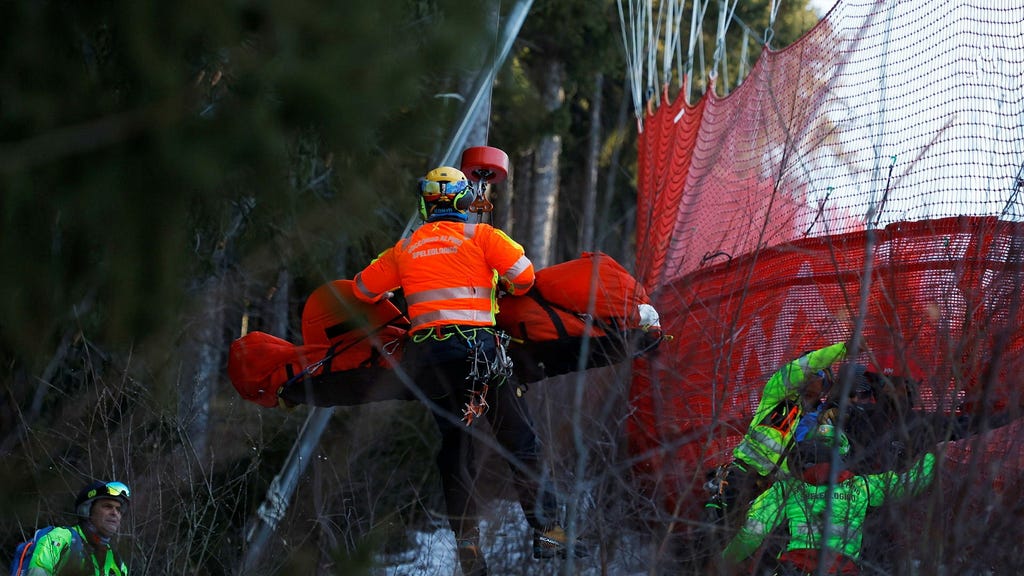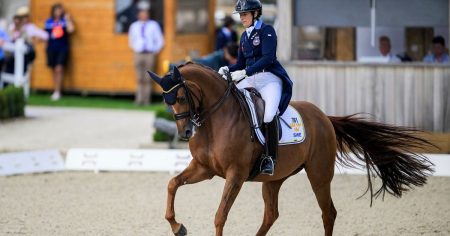The treacherous Stelvio slope in Bormio, Italy, became the center of controversy this past weekend after several harrowing crashes during the men’s downhill World Cup races. The demanding course, known for its icy conditions, steep gradient, and relentless speed, witnessed a series of spectacular and concerning incidents, raising serious questions about its suitability for high-level competition, especially considering it will host the Olympic downhill races in just thirteen months. Descriptions of the slope ranged from ”life-threatening” and ”rocky” to ”poorly prepared,” highlighting the athletes’ precarious navigation of the icy track and the apparent inadequacy of its preparation for the high speeds attained. These concerns were amplified by the injuries sustained by multiple racers, forcing many to reflect on the balance between the challenging nature of the sport and the safety of the athletes. The recurring theme among racers and commentators was the excessive speed generated on the course, compounded by the icy patches and demanding terrain.
The most significant incident involved the dramatic crash of Swiss skier Urs Kryenbühl, who lost control near the finish line at a reported speed of over 140 km/h. Kryenbühl was launched high into the air before crashing heavily into the safety netting, sustaining a concussion, a fractured collarbone, and injuries to his knee ligaments, effectively ending his season and placing his Olympic aspirations in jeopardy. While Kryenbühl’s crash was the most severe, it was not an isolated incident. Several other racers, including American Ryan Cochran-Siegle and Austrian Daniel Hemetsberger, also suffered high-speed crashes, highlighting the inherent dangers of the Stelvio piste in its current configuration. Cochran-Siegle, considered a medal contender for the upcoming Olympics, suffered a neck fracture and will likely miss the remainder of the season. Hemetsberger, while avoiding serious injury, experienced a terrifying high-speed slide into the safety nets. These incidents collectively underscore the urgency with which the course needs to be reassessed before the Olympics.
The recurring narrative revolves around the excessive speed attained on the Stelvio, exacerbated by the steepness and the icy conditions. Skiers reach remarkably high speeds, leaving little margin for error. Even minor mistakes, at those velocities, can have devastating consequences. The sheer speed, coupled with the unforgiving nature of the icy track, transforms the challenging course into a potentially lethal one. Many racers, including Swedish skier Felix Monsén, have suggested modifications to the course design to mitigate the risk. Monsén proposed the addition of more turns to decrease the speed, a suggestion echoed by other athletes and coaches. The current configuration, they argue, prioritizes sheer speed over technical skill and safety, creating a scenario where even the slightest error can result in catastrophic injury.
The debate surrounding the Stelvio course highlights the ongoing tension between the pursuit of thrilling, high-speed racing and the paramount importance of athlete safety. While the inherent danger is part of the sport’s allure, the recent spate of crashes has ignited a discussion about the acceptable level of risk. The International Ski Federation (FIS), the governing body for skiing and snowboarding, has a responsibility to ensure the safety of the athletes, and the Bormio crashes raise serious questions about whether the Stelvio piste, in its current state, meets those safety standards. The FIS will undoubtedly face mounting pressure to implement changes to the course before the Olympics, potentially involving modifications to the terrain, improved course preparation, or adjustments to the starting gate to reduce speeds.
The preparation of the course also came under scrutiny. Several racers commented on the icy and inconsistent conditions of the snow, suggesting that the preparation was subpar. While icy conditions are not uncommon in downhill racing, the complaints centered on the unevenness of the ice and the hardness of the surface, which made it difficult to control skis and increased the risk of losing an edge. A properly prepared course should offer a consistent and predictable surface, allowing racers to execute their lines with confidence. The perceived inadequacies in the course preparation further amplified the concerns about safety and raised questions about the readiness of the Bormio organizers to host an event of the magnitude of the Olympic Games.
The incidents at Bormio serve as a stark reminder of the inherent risks involved in downhill skiing, particularly at the highest level of competition. While the sport will always retain an element of danger, the focus should be on mitigating those risks to the greatest extent possible. The upcoming Olympics offer a crucial opportunity to reassess the balance between the pursuit of thrilling, high-speed racing and the paramount importance of athlete safety. The FIS, the Bormio organizers, and the athletes themselves have a shared responsibility to ensure that the Stelvio course is prepared to the highest standards, providing a challenging yet safe environment for the world’s best skiers to compete for Olympic glory. The hope is that the lessons learned from the Bormio crashes will lead to meaningful changes, preventing future tragedies and ensuring the long-term health and safety of the athletes.














